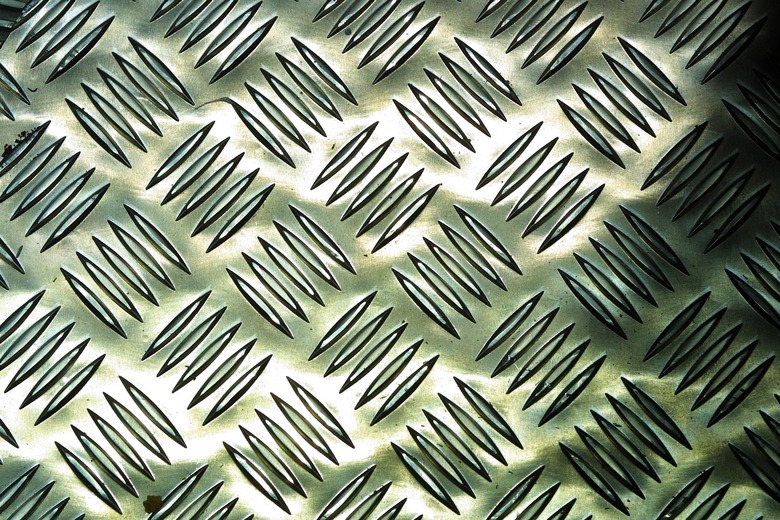Differences Between 52100 & E52100 Steel
Steel is an alloy of iron with any of a number of metals, including chromium, nickel, copper, titanium and molybdenum. Steel also contains other materials, including gases such as carbon and nitrogen. The qualities of steel vary with its composition. The uses of steel vary by characteristics such as its composition, strength, and physical, mechanical, electrical and thermal properties. Steel is graded by these characteristics. The grade of particular steel is represented by an alphanumeric designation. E52100 and 52100 are two grades of steel of highly similar composition with similar properties and characteristics.
Steel
Steel
Steel is a name given to a wide range of metal alloys containing iron. Alloy steels are iron-based alloys containing large amounts of chromium. Steel containing more than 3.99 percent chromium is classified as stainless steel or tool steel. Steel is made through a process involving treatment at very high heat. The characteristics and strength of a steel alloy depend on the materials used in the alloy and the heat treatment process by which it was made. Steel has to be tested for ductility, hardness, stiffness, yield strength and toughness. The results of these tests determine the grade given to a particular steel alloy.
Grades
Grades
The official designation system for steels is defined by the European Standard EN 10027: 1992 combined with the CEN report CR10260. Structural steel grades vary by region, continent or country, with different grades for the American, Russian, European, Japanese and Canadian standards. The grades are based on mechanical characteristics, physical characteristics, special requirements and treatment conditions. The AISI E52100 grade is designated by the American Iron and Steel Institute (AISI).
E52100
E52100
AISI E52100 steel is a high-carbon iron alloy. It is composed of carbon, chromium, iron, silicon, manganese, phosphorus and sulphur. It is strong and resistant to wear. It exhibits a high degree of hardenability and a machinability of forty percent, making it one of the most commercially important forms of steel. It is categorized as an alloy steel, high-carbon steel, low allow steel and more generally as carbon steel or a metal.
52100
52100
Steel with a grade of 52100 is a type of low alloy steel. It consists of the elements carbon, chromium, iron, manganese, silicon, phosphorus and sulphur, with high levels of carbon and chromium. This grade of steel is corrosion-resistant, has excellent hardenability and good machinability. It is mainly used commercially to make steel bearings.
Cite This Article
MLA
Doe, Gissimee. "Differences Between 52100 & E52100 Steel" sciencing.com, https://www.sciencing.com/differences-between-52100-e52100-steel-12070393/. 24 April 2017.
APA
Doe, Gissimee. (2017, April 24). Differences Between 52100 & E52100 Steel. sciencing.com. Retrieved from https://www.sciencing.com/differences-between-52100-e52100-steel-12070393/
Chicago
Doe, Gissimee. Differences Between 52100 & E52100 Steel last modified March 24, 2022. https://www.sciencing.com/differences-between-52100-e52100-steel-12070393/
